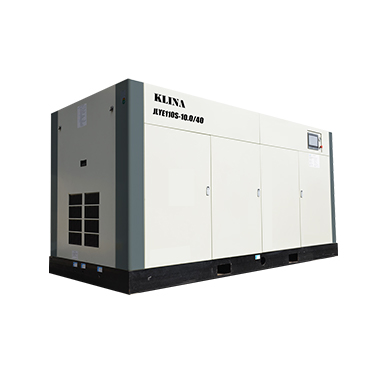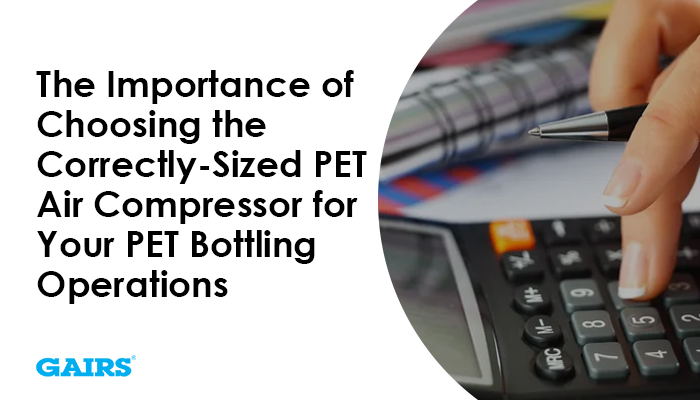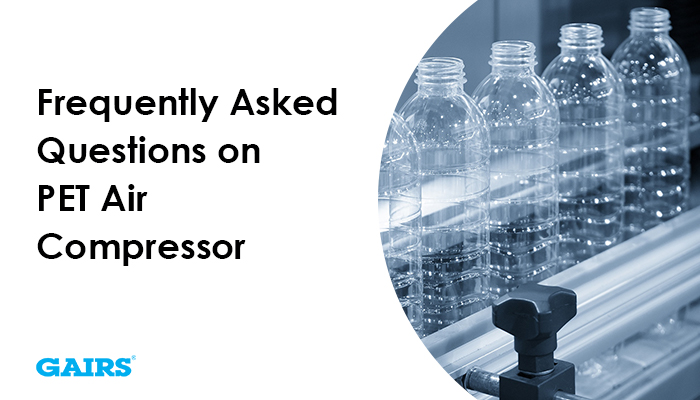PET Air Compressors Lineup
Power: 52-440 kW
Pressure: 3.0-4.0 MPa
FAD Capacity: 6.0-40.0 m³/min
Number of compression stage: 2
Lubricant: RO Water

Power: 52-440 kW
Pressure: 3.0-4.0 MPa
FAD Capacity: 6.0-40.0 m³/min
Number of compression stage: 2
Lubricant: RO Water
Power: 37-405 kW
Pressure: 3.0-4.0 MPa
FAD Capacity: 3.5-45.0 m3/min
Number of compression stage: 2-3
Lubricant: Oil
Key Benefits of Using Gairs PET Air Compressors in PET Bottle Production
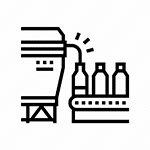
These compressors provide the high pressure air needed to inflate PET preforms into their final bottle shape. The high pressure ensures rapid and uniform inflation, allowing for precise bottle dimensions.
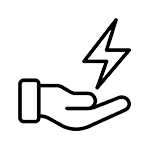
Compared to piston compressors, water injection cools the compression process, enhancing efficiency and reducing energy consumption. This is crucial for maintaining production rates without overheating the system.
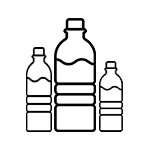
High-pressure compressors can adapt to different bottle sizes and shapes, making them suitable for diverse product lines. This versatility helps manufacturers meet varying market demands.

The water-injection method eliminates oil contamination, ensuring that the compressed air used in the blowing process is 100% clean and suitable for food-grade applications.
The Process of PET Bottling
The process of PET (Polyethylene Terephthalate) bottle blowing involves several key stages, primarily divided into two methods: injection stretch blow molding (ISBM) and extrusion blow molding (EBM).

1. Preform Production
Injection Molding: PET material is melted and injected into a mold to form a preform (a thick-walled, tube-like structure resembling a test tube with a bottle neck and threads).
Cooling: The preforms are cooled and solidified.
2. Heating the Preforms
The preforms are heated in a controlled manner using infrared lamps to make the material pliable.
The temperature is precisely controlled to ensure the PET is evenly heated and ready for stretching and blowing.
3. Stretch-Blow Molding
Stretching: The heated preform is placed in a blow mold, and a stretch rod extends downward, elongating the preform vertically.
Blowing: High-pressure air is introduced into the preform, causing it to expand against the walls of the mold. This shapes the PET into the desired bottle form.
This process requires precise machinery, such as high pressure PET air compressors (e.g., Gairs’ two-stage water-injected compressors) to provide the clean compressed air needed for bottle blowing. These compressors ensure efficiency, reliability, and consistent bottle quality.
4. Cooling and Solidification
The blown bottle is cooled within the mold to solidify its shape.
Water or air cooling systems are often used for efficiency.
5. Trimming and Finishing
Excess material from the molding process, such as flash, is trimmed off.
The bottle threads and neck finish are inspected and refined for compatibility with caps or closures.
6. Quality Control and Testing
The bottles undergo various quality checks, such as pressure testing, leak testing, and visual inspections, to ensure they meet industry standards.
7. Packaging and Distribution
The finished bottles are cleaned, stacked, and prepared for shipping to bottling plants where they are filled with beverages or other products.
The Evolution of PET Air Compressor
| Oil-Injected Piston Air Compressor | Oil-Free Piston Air Compressor | Air Booster | Water-Injected Oil-free Single Screw Compressor |
|
| Image | 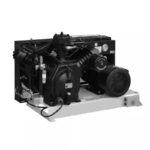 |
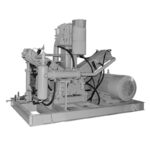 |
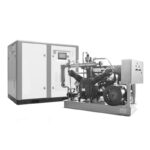 |
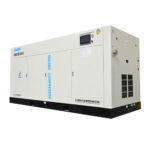 |
| Compression Mechanism | Piston | Piston | Rotary Screw + Piston | Single Screw |
| Number of Compression Stage | 2-3 | 3 | 2 | 2 |
| Vibration Level | ±100 mm/s | ±100 mm/s | ±50 mm/s | ±3 mm/s |
| Lubrication Method | Oil Lubricated | Oil Free | Oil Lubricated | Oil Free (Water Lubricated) |
| Compressed Air Quality (according to ISO 8573-1) | Class 3-4 | Class 1 | Class 1 | Class 0 |
| Working Principle | In a multi-stage piston air compressor, atmospheric air is first compressed to around 6–8 bar in the first cylinder, then cooled before being compressed further to 15–17 bar in the second stage. After additional cooling, the air reaches 30–40 bar in the final stage. Oil-injected compressors use oil for lubrication and sealing, while oil-free models rely on advanced sealing to prevent oil contamination. | In a rotary screw compressor + booster combo, air is first compressed by the rotary screw compressor from atmospheric pressure to a pressure around 7–8 bar. The compressed air is then sent to the booster, where it is further compressed to higher pressures, like 30–40 bar. | For a two-stage single screw compressor, air is compressed in two stages. In the first stage, it is compressed to a lower pressure (e.g., 7-9 bar), then directly enters the second stage without cooling, where it is compressed to higher pressures (e.g., 30–40 bar). | |
| Efficiency | Provides less consistent air delivery due to internal friction caused by the traditional piston working mechanism, resulting in possible energy and pressure losses. | Lower efficiency due to a lack of lubricant which results in higher energy consumption and also leads to generation of abrasion particles. | Efficiency can be compromised if the upstream compressor (e.g., an oil-injected rotary screw compressor) is not optimized, which leads to less consistent air delivery as booster systems may have energy losses during pressure boosting. | Theoretically no clearance volume in single screw airend which provides excellent dynamic lubrication performance when screw rotor speed is at 3000 rpm. Water as a lubricating medium keeps the compressor near isothermal compression. |
| Working Temperature | 140–180°C | 160–200°C | 120–150°C | Below 50°C |
| Interstage Cooling Needed | Yes | Yes | Yes | No |
| Regular Maintenance | Air filters, valves, piston rings, seals and gaskets, lubricant oil, etc. | Air filters, valves, piston rings, seals and cooling system, etc. | Air filters, valves, lubricant oil, seals and cooling system. | Air filter, water filter, and water softener elements only |
| Regular Maintenance Time | 3-5 days/time | 1-2 days/time | 60-90 mins/time | 30 mins/time |
| Advantage | Low Price | Cost-effective; Easy Maintenance |
Flexible; Energy-efficient | Higher efficiency; Energy-efficient; Easy Maintenance; Environmentally-friendly |
Explore Fun PET-Related Articles Below
You May Also Want To Know
The following are frequently asked by our customers about high pressure air compressors.
High-pressure water-injected compressors are widely used in industries like PET bottling, pharmaceuticals, and food packaging, where clean, high-pressure air is critical for processes such as bottle blowing.
Water injection cools the compression process, which reduces heat buildup, improves efficiency, and extends the compressor’s lifespan by minimizing wear on key components.
All piping and key components, including the airend (rotor and housing) that come into contact with air and water, are constructed from durable Stainless Steel 304. This ensures long-lasting performance and resistance to corrosion.
Please contact our expert with infomation on your current installation system status and we will recommend the corresponding model for you.
Regular maintenance includes checking valves, replacing filter elements (air filter element, water filter element and water softener element ONLY), and monitoring compressor performance. The airends also require periodic overhaul to ensure efficiency.




